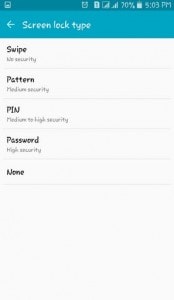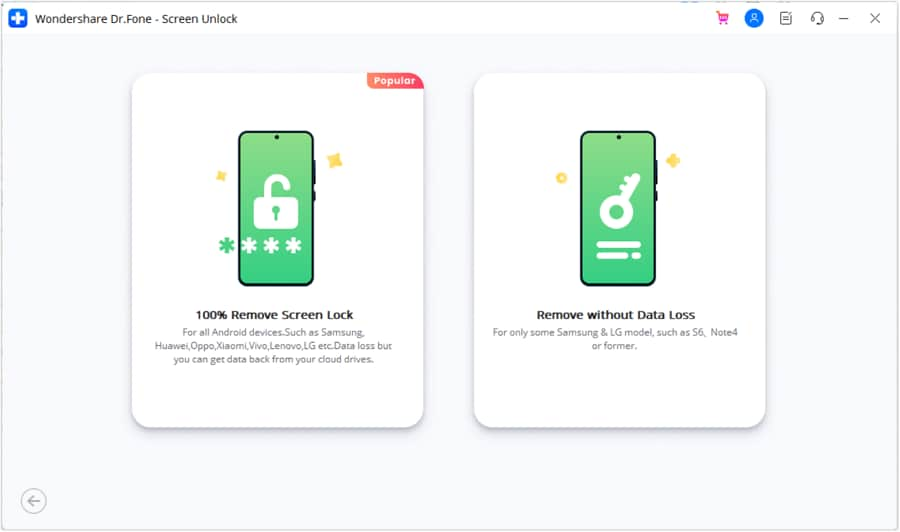
Rootjunky APK To Bypass Google FRP Lock For Xiaomi Redmi A2+

Rootjunky APK To Bypass Google FRP Lock For Xiaomi Redmi A2+
Factory Reset Protection (FRP) is a security feature built into Android devices running Android 5.1 Lollipop and later versions. It prevents someone from using your phone after a factory data reset without Google account login credentials. The FRP makes it much less attractive for thieves to steal Android phones, knowing they will need help to access them.
FRP automatically activates when you add a Google account to your Android phone. It links the Xiaomi Redmi A2+ device to your account, making it the “trusted owner.” Once activated, FRP becomes embedded in the phone’s system.
While Google FRP is a valuable security feature, it’s vital to acknowledge that there are legitimate situations where bypassing it might be necessary. These instances include forgotten Google account credentials, buying a second-hand device, and device issues. In these cases, tools like RootJunky can help you bypass FRP Lock. We’ll explore how to use RootJunky APK later, but first, let’s define what it is and its role in FRP bypass.

The RootJunky APK is a free Android application also called RootJunky SDL or RootJunky FRP Bypass tool. This app’s primary function is to bypass the Google Account FRP lock on Samsung devices. Rootjunky uses the weaknesses in Android’s setup process to create a new user account or switch existing ones, letting you bypass the FRP and regain control of your phone.
You can complete this process using the app by connecting your phone to a computer through an OTG cable. RootJunky can be helpfu l if you’ve forgotten your Google account password or bought a second-hand phone locked to someone else’s account. However, only use it if you have legitimate reasons to bypass FRP lock, like accessing your device after forgetting your Google account details.

Downloading the RootJunky FRP bypass tool from unofficial sources can introduce malware risks, so stick to trusted sources like the official website. Additionally, when exploring RootJunky, it is vital to keep the following in mind:
- Not all Android devices are susceptible to the methods used by RootJunky. It is necessary to check compatibility with your specific device model and Android version.
- Using FRP bypass tools like RootJunkycan potentially compromise the security of your device. Be cautious and proceed if you fully understand the risks involved.
- Bypassing FRP may involve data loss.
- Download RootJunky FRP bypass APK from a reliable source to minimize the risk of malware or viruses. You can check the APK file from official websites or trusted forums.
- Google constantly updates its security measures, so these tools may not always work effectively.
Part 2: How To Use RootJunky To Bypass Google FRP?
Here are the general steps to use the FRP Bypass APK RootJunky app to bypass Google FRP lock. But remember that specific steps may vary depending on your device and Android version:
- Step 1: On your computer, download the Rootjunky RealTerm program from the official Rootjunky website.

- Step 2: On your phone, download the Rootjunky APK (com.rootjunky.frpbypass-1.0.apk) file from the official website or other reputable sites.

- Step 3: Go to Settings > Security and tap Install unknown apps. Then, enable unknown sources to allow installation of apps from outside the Play Store. Connect your device to a Wi-Fi network.

- Step 4: On your Android phone, open a file explorer app and install the downloaded RootJunky APK file.
- Step 5: Connect your smartphone to your computer using a USB cable.
- Step 6: Launch the Rootjunky RealTerm program on your computer. Under the Display tab, check the Half Duplex option.
- Step 7: On your computer, go to Device Manager > Modems. Locate your device’s port name (e.g., COM3).
- Step 8: On the RealTerm program, enter the correct port number under the Ports tab, then click Change.

Step 9: Click Send to establish a connection. Enter the two commands:
at + creg? \ r \ n
atd1234; \ r \ n
Step 10: Once connected, the Rootjunky APK on your phone will provide on-screen instructions to bypass FRP.
Step 11: If prompted, perform a factory data reset of your device.
While RootJunky offers a free method for FRP bypass, it can be incompatible with your device’s brand, requiring technical knowledge, tedious, and potentially risky. If you are looking for a simpler, safer, and more user-friendly solution, Wondershare Dr.Fone might be a better fit for you. If you want to learn how to use this tool to bypass FRP lock with minimal technical expertise, then keep reading.
Part 3: Easier Tool Than RootJunky APK To Bypass Google FRP
Google FRP adds an extra layer of security after a device reset. However, regaining access to the smartphone can be challenging if you forget your Google account details, forget your lock screen, or just buy a used device. While methods like the FRP RootJunky app exist, using it can be complex or risky.
Consider exploring third-party options like Dr.Fone for a potentially easier and safer FRP bypass solution. Dr.Fone Screen Unlock tool helps remove the Android FRP lock without requiring a PIN or Google Account.
Why Use Dr.Fone - Screen Unlock?
Here are some of the key features of Dr.Fone - Screen Unlock:
- **User-friendly:**Fone boasts an intuitive interface, eliminating the need for technical expertise. Even beginners can navigate the process with ease.
- **Widespread Brand Compatibility:**Fone supports mainstream brands, such as Samsung, Xiaomi, Oppo, Redmi, Realme, and Vivo, catering to a broader user base.
- **Fast and Efficient:**Regain access to your device in minutes without wasting time on tedious procedures.
Step-by-step Guide to Removing FRP Lock With Dr.Fone - Screen Unlock
Ready to leave the hassle of using RootJunky and easily bypass the FRP lock? Download and install Dr.Fone on your computer, then follow these steps to learn how to bypass Google FRP on your device:
- Step 1: Launch Dr.Fone on your computer and connect it to your Android device. Choose Screen Unlock from the Toolbox in the main interface.

- Step 2: Choose Android as your device type. This will take you to the next screen, where you can select Remove Google FRP Lock to proceed.

- Step 3: Select your device’s brand from the list and click Start to continue.

Note:
The next steps may vary depending on the brand you selected.
- Step 4: Select the OS version of your device and click Start to continue.

- Step 5: Access the secret menu on your phone using the on-screen instructions, then click Next to proceed to the next step.

- Step 6: When your Samsung prompts you to activate USB debugging, tap Allow. Then, on your computer screen, click Authorized to confirm.

- Step 7: You will see the FRP lock being bypassed on your Android device on the next screen.

- Step 8: Click Done if the FRP lock removal was successful, otherwise, click Try Again to repeat the process.

That’s it! With Dr.Fone Screen Unlock, you can easily bypass Google FRP and regain access to your Android device, leaving the complexities of RootJunky behind.
Tips: Are you searching for a powerful FRP bypass tool? No worries as Dr.Fone is here to help you. Download it and start a seamless unlock experience!
Conclusion
Both RootJunky and Dr.Fone offer options for you to regain control of phones with Google FRP lock. FRP Bypass RootJunky tool excels with its free-to-use approach, perfect for tech-savvy users comfortable with APK installations. While requiring a paid subscription, Dr. Fone provides pre-rooted firmware installations and broader device compatibility, which is ideal for those seeking a more streamlined but supported experience.
The best choice boils down to your personal needs and budget. Remember, FRP bypass should only be utilized by rightful owners facing genuine lockouts. When used responsibly, these tools can help you access your phone after a factory reset even without your Google account credentials. Choose the tool that best fits your needs and proceed with caution. Use these tools responsibly and regain access to your device the right way.
The Ultimate Guide to Xiaomi Redmi A2+ Pattern Lock Screen: Everything You Need to Know
Do you want to revamp your phone’s pattern lock screen and give it a new life? Well, you are not the only one! Lots of Android users keep looking for numerous ways to change their screen lock pattern and make it more secure. After all, if your lock screen pattern is strong, then it will certainly keep an intruder away. In today’s world, our privacy is everything and we should take every needed measure to protect it. To help you do the same, we have come up with this informative guide. Read on and learn how to set up a strong pattern lock screen on your device and what to do if you have forgotten it.
Part 1: How to set up Pattern Lock Screen on Xiaomi Redmi A2+?
Out of all the provided options for screen locks, pattern lock is mostly used due to its ease of access and added security. If you haven’t set up a screen lock pattern on your device, then we recommend you to do the same right away. Not only will it keep intruders away, it will also protect your privacy. To learn how to set up a lock screen pattern on an Android device, simply follow these steps:
- 1. Firstly, unlock your device and go to its Settings. You can access it from the Home Screen or from its Notification Center.
- 2. Under the personal or privacy section, you can access the “Lock Screen and Security” option.
- 3. In some versions, the option is also listed right at the top of the settings (in its quick access).



- 4. To set up a pattern lock screen, tap on the “Screen lock type” feature.
- 5. This will provide a list of all the different kinds of locks that you can apply. Ideally, it would be password, pin, pattern, swipe, or none. In “Swipe”, you can unlock a device just by swiping the screen. Whereas, in pattern, pin, or password, you would be needed to provide the respective pattern/pin/password to unlock the Xiaomi Redmi A2+ device.
- 6. We recommend setting up a lock screen pattern instead. To do this, tap on the “Pattern” option.



- 7. From the next screen, you can simply draw any kind of pattern of your choice. Ideally, it should join at least 4 dots on the screen. We recommend using a strong screen lock pattern to provide unmatched security to your device.
- 8. Furthermore, you need to confirm your choice and provide the same pattern once again. Make sure that you draw the same pattern here.
- 9. Additionally, the interface will ask you to provide a security pin as well. In case if you will forget your pattern, then you can access your phone by taking the assistance of this pin.



- 10. Similarly, you would be required to confirm the pin as well to finish the setup.
- 11. That’s it! By completing these steps, a screen lock pattern will be implemented on your device.
Later, you can follow the same drill to change your device’s lock screen pattern as well. Though, you would be needed to provide the existing pattern to access these features. Out of all the lock screen options, you should go with the pattern lock. Not only it is the most accessible option, it also provides fast results with an added security.
Part 2: What to do if you forget Android pattern lock?
After following the above-mentioned tutorial, you would be able to set up a pattern lock screen on your device. Since it is recommended to have a strong pattern lock, users often forget their pattern lock after implementing it. This prohibits them from using their own Android device. If you have a similar experience, then don’t worry. There are plenty of ways to unlock a device and remove its pattern lock without causing any harm to the system. Visit our informative tutorial and learn different ways to unlock or bypass the Android pattern lock screen.
Out of all the provided options, it is recommended to use Dr.Fone - Screen Unlock (Android) . It provides fast and reliable results without getting rid of your device’s content. The tool is a part of the Dr.Fone toolkit and is already compatible with all the leading Android smartphones. By following its simple click-through process, you can unlock the screen lock pattern on your device in no time. Although this tool can help you keep all data after unlocking screen passcode on your Samsung or LG phone, it will wipe all data after unlocking other Android phone including Huawei, Oneplus and so on.
Dr.Fone - Screen Unlock (Android)
Remove 4 Types of Android Screen Lock without Data Loss
- It can remove 4 screen lock types - pattern, PIN, password & fingerprints.
- Only remove the lock screen, no data loss at all.
- No tech knowledge asked, everybody can handle it.
- Work for Samsung Galaxy S/Note/Tab series, and LG G2, G3, G4, etc.
4,820,695 people have downloaded it
Part 3: Top 10 Hardest pattern lock ideas for Android
Your pattern lock is one of the most important security aspects on your device. Anyone can access your phone after decoding your pattern lock. Needless to say, if you have a simple pattern lock on your device, then it can easily be accessed by someone else. To help you set up a strong pattern lock screen, we have handpicked some of the hardest combinations. Have a look at these lock screen pattern combinations and choose the one you like the most!
For your convenience, we have marked the dots as 1-9. This will help you know the exact sequence of the lock.

1
8 > 7 > 4 > 3 > 5 > 9 > 6 > 2 > 1

2
7 > 4 > 1 > 5 > 2 > 3 > 8 > 6

3
1 > 8 > 3 > 4 > 9

4
7 > 4 > 2 > 3 > 1 > 5 > 9

5
2 > 4 > 1 > 5 > 8 > 9 > 6 > 3 > 7

6
8 > 4 > 1 > 5 > 9 > 6 > 2 > 3 > 7

7
7 > 2 > 9 > 4 > 3 > 8 > 1 > 6 > 5

8
5 > 7 > 2 > 9 > 1 > 4 > 8 > 6 > 3

9
1 > 5 > 9 > 4 > 8 > 2 > 6 > 3 > 7

10
7 > 5 > 3 > 4 > 2 > 6 > 1 > 9

After selecting and setting up a new screen lock pattern on your device, make sure that you remember it. You can lock and unlock your phone a few times with your new pattern lock in order to memorize it. Nevertheless, if you forget your lock screen pattern, then you can take the assistance of Dr.Fone Android Pattern Lock Removal to get an instant solution.
Now when you know every essential thing about pattern lock screen on Android, you can certainly keep your device safe from any unforeseen intrusion. A strong lock screen pattern will certainly be of a great use to you. It will protect your apps, data, and device accessibility in an effortless manner. Go ahead and set up a strong and secure pattern lock screen on your device and provide an added layer of security to it.
How To Change Xiaomi Redmi A2+ Lock Screen Password?
Setting up a lock screen is a crucial step in protecting your phone’s data. If you’re not sure how to create one on your Android™ phone, we’re here to help.
Your Android lock screen pin or password and your Google Account password are two passwords you use frequently. Keeping a good lock screen passcode is important.
Although you might not frequently enter your lock screen pin or password if you use a biometric unlocking method like fingerprint or facial recognition, it’s still important to be familiar with it.
You’ll need to reset your Google Account password if you forget it or become locked out for some other reason when you try to keep accessing all of your data. You might also need to change lock screen passcode from time to time.

How to Change/Set up Lock Screen Password
Select Screen Lock Type under Settings > Lock Screen. From there, you may select from a variety of lock screen options:

Swipe: This lock type allows you to swipe in any direction on your screen to unlock your phone.
Pattern: If you opt to unlock your phone in this manner, you must create a pattern on a 3-by-3-dot grid.
Pin: A PIN lock is a four-digit code. Make sure you select a set of numbers that you can quickly recall.
Password: Your phone’s highest level of security. Your password must be distinct, easily remembered, and include at least one letter and 7 characters.
Follow the setup instructions on-screen after selecting the security measure you prefer.
Additionally, you’ll notice options to enable fingerprint or face biometric recognition features. Iris Scanner (S8/S8+) or Intelligent Scan (S9/S9+) may also be available on some older Samsung® models.
Face recognition: By holding your face directly in front of your phone’s screen, you may unlock your phone and authenticate yourself in apps.
With fingerprints, you can quickly touch your finger to unlock your phone.
Iris: Check your eyes to make sure that only you can see the contents of your phone.
Intelligent Scan: A method of device unlocking that combines face and iris recognition technology.
Follow on-screen instructions if you decide to employ one of these sophisticated security technologies, or go to Settings > Biometrics and security for more customization choices.
How to look up saved passwords on my device?
The way that Google Chrome manages your usernames and passwords is excellent. But what if you want to log in to a particular website from another device but can’t recall your password, and the website won’t load the data for you? You may quickly obtain a list of all saved passwords by browsing through Chrome’s settings, then manually keying it in.
You may access the passwords saved in the Google Chrome app on a Mac or PC because the app is connected to your Google account. Any passwords saved on your Android phone can easily be removed via the Chrome app.
How to Change your Password when you forget it?
1. Google Find My Device
As you are likely aware, every Android device is connected to a Google account. As a result, if you’d like, you may use it to unlock Android as well. You’ll need to know your Google account login information for this. When you’re ready, use these instructions to find out how to unlock a phone password.

- Login in using your Google credentials by going to the official Google Find My Device website.
- You will see the gadgets connected to your Google account as you enter the interface, along with a map of where they are.
- To wipe the Xiaomi Redmi A2+ device, click the ERASE DEVICE option on the left side panel. You will then be required for your password.
- Once more, select “Erase.” This will reset the Xiaomi Redmi A2+ device and get rid of the forgot pattern lock.
2. Using Recovery Mode

Users of Android smartphones and tablets can troubleshoot various issues with their devices using a feature known as Android Recovery Mode. It might be helpful if you discover that your device is functioning strangely. Recovery Mode Android technically refers to a unique bootable partition with a recovery application installed inside it.
However, users can also use it to reset the android password if it is forgotten. The instructions for resetting android devices through recovery mode are different for every android device.
3. Forgot Password Feature (Android 4.4 and Lower)
In case you lose your pattern, PIN, or other passwords, older versions of Android, including Android 4.4 KitKat, have an integrated feature to let you continue using your device.
Enter an erroneous pattern or PIN five times on the lock screen to reveal this function. A button with the words “Forgot pattern,” “Forgot PIN,” or “Forgot password” will show up. Tap it. The username and password for the Google account connected to your Android smartphone will be required.
4. Using ADB
Launch Recovery mode and restart the phone. Turn off your phone. Then to access the Bootloader, simultaneously press the Power button and the Volume Down key. Then select Recovery mode.
Use USB to connect the phone. You must have ADB set up on your computer. (ADB is part of the Android Developer Bundle)
Use the shell’s following command to start
Rm /data/system/gesture.key using the adb shell
Turn the phone back on normally. Any pattern will unlock the screen, and you will be prompted to enter one.
Bonus Method: Dr.Fone - Screen Unlock
On most Android handsets, you can attempt Dr.Fone to unlock the screen lock easily. It allows you to delete the password, PIN, pattern, and fingerprint from an Android phone.
Step 1. Select Unlock Android Screen
Please select “Unlock Android Screen.”

Step 2. Select device model
On this page, please choose the option fitting your phone.

Only when you select the right phone brand so the unlock process will go with success.

Step 3. Enter into Recovery Mode
Then go with the instructions for getting the Android phone into Recovery Mode. Here we show you examples of Samsung phones.

(Recovery Mode When the Samsung phone via Bixby)

(Recovery Mode When the Samsung phone via Bixby)

(Recovery Mode When the Samsung phone via Home button)
Step 4. Instructions to Wipe Cache Partition
On the page Recovery Mode, you’ll see this interface to continue your unlock process.

Now you can access your Android device without entering any password after the unlock process is well done.

Conclusion
Any of the aforementioned methods can be used to overcome the obstacle of using your Android handset. The best thing about this article is that you only need some simple unlock ways to complete the tasks. Dr.Fone - Screen Unlock is the easiest way of restoring your device if you have a stuck password or fingerprint.
- Title: Rootjunky APK To Bypass Google FRP Lock For Xiaomi Redmi A2+
- Author: Marry
- Created at : 2024-07-18 13:32:10
- Updated at : 2024-07-19 13:32:10
- Link: https://unlock-android.techidaily.com/rootjunky-apk-to-bypass-google-frp-lock-for-xiaomi-redmi-a2plus-by-drfone-android/
- License: This work is licensed under CC BY-NC-SA 4.0.

